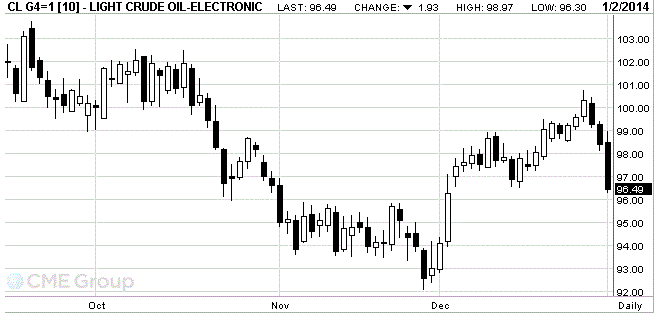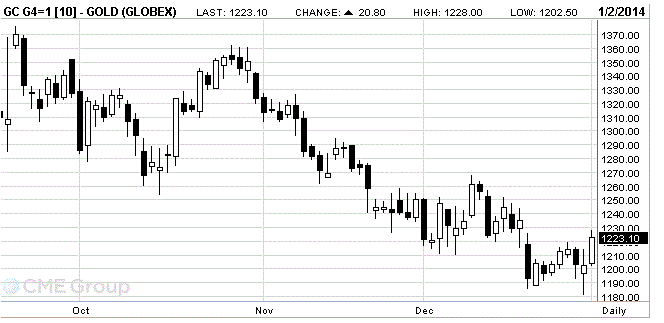Notícias do Mercado
-
16:40
Oil: an overview of the market situation
Oil prices fell to their lowest level in more than two weeks (mark WTI), as improving U.S. economy has increased the likelihood that the Federal Reserve will further limit the quantitative stimulation. Futures fell 1.7 percent , registering the third consecutive session decline , after data showed that the number of applications for unemployment benefits in the U.S. fell . As it became known , the number of initial claims for unemployment benefits , a measure of layoffs, reduced by 2000 and totaled a seasonally adjusted 339,000 in the week ended December 28. Economists had expected 334,000 initial claims per week. The number of applications from the previous week was revised to 341,000 from 338,000 .
Recall that the Federal Reserve closely watching employment data to determine the right time to start reducing the amount of bond purchases designed to stimulate the economy.
The course of trade is also affected by expectations of future output inventory report . Experts estimate that U.S. crude stocks fell again , that may be the fifth consecutive weekly drop .
Meanwhile, add the data from the EIA, which will be released today , will probably show that gasoline inventories rose by 1.38 million barrels - up to 221.2 million during the week ending December 27. Distillate stocks are projected to increase by 750 thousand to 114.9 million
Cost February futures on U.S. light crude oil WTI (Light Sweet Crude Oil) fell to $ 96.49 a barrel on the New York Mercantile Exchange.
February futures price for North Sea Brent crude oil mixture fell $ 2.35 to $ 108.85 a barrel on the London exchange ICE Futures Europe.

-
16:20
Gold: an overview of the market situation
Gold prices rose sharply today , which was associated with the resumption of physical purchases after prices fell to a six-month low . But many investors remained cautious because of the bright prospects for the world economy and speculation about the imminent end of quantitative easing in the U.S..
Recall that the price of the precious metal fell by 28 percent in 2013, while completing a series of 12 consecutive years of growth , as the U.S. Federal Reserve announced plans to change the ultrasoft monetary policy this month by lowering monthly asset purchases by 10 billion . dollars - up to 75 billion Quantitative easing helped gold to rise in recent years, maintaining pressure on long-term interest rates and stoking fears of inflation.
Analysts also say that the price movements are still due to low volumes during the holiday week .
" Liquidity remains very low , this should not rely too much on the economic data presented in an attempt to anticipate movement . Worth the wait until next week to have a clear picture of where we are located ," said Commerzbank analyst Daniel trademark Briesmann . " But while investments in exchange traded funds continue to decline , gold is likely to remain under pressure."
The data showed that the gold reserves in SPDR Gold Trust - the world's largest gold exchange-traded fund , remained unchanged on Tuesday - at the level of 798.22 thousand tons , which is the lowest level since January 2009 .
Meanwhile, add that influenced the course of trading data on unemployment in the United States. The number of people filing for first time applications for unemployment benefits fell slightly last week , while thousands of other Americans are faced with the loss of extended benefits.
The number of initial claims for unemployment benefits , a measure of layoffs, reduced by 2000 and totaled a seasonally adjusted 339,000 in the week ended Dec. 28 , said on Thursday the Ministry of Labour .
Economists had expected 334,000 initial claims per week. The number of applications from the previous week was revised to 341,000 from 338,000 .
Analyst Department of Labor said that there was nothing unusual in the data and that all states reported data for the Christmas week .
Cost February gold futures on the COMEX today dropped to $ 1223.10 per ounce.

-